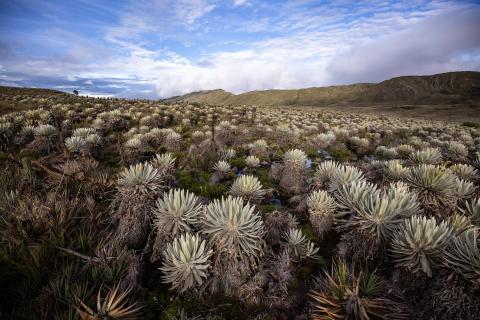Páramos
The páramos, located on the peaks of the Andes often above 3,000 m.a.s.l., are characterized by three distinctive bands: the low páramo, high páramo and super páramo. Colombia is home to approximately 50% of all the world's páramos, sharing this distinction with Ecuador and Venezuela. These ecosystems, marked by water stress due to low temperatures, high solar radiation and strong winds, only allow the adaptation of low herbaceous and shrubby vegetation, such as frailejones, pajonales and chuscales.
The fragmented distribution of the páramos has resulted in a high degree of endemism in their biological diversity, with more than 4,700 plant species that represent 17% of Colombia's plants. Páramo vegetation plays a crucial role in retaining water from fog and low clouds, and its porous soils contribute to the formation of river headwaters.
The ecosystem services of the páramos, particularly in relation to water regulation and security, are essential for the Colombian population, with more than 70% of the water supply coming from these ecosystems. In addition, the páramos have cultural and spiritual significance for indigenous and local communities, who consider them sacred and vital to their well-being. However, 15.5% of the páramos have experienced transformations, and 7% of those that are protected have also been affected.
Source: Evaluación nacional de biodiversidad y servicios ecosistémicos de Colombia

